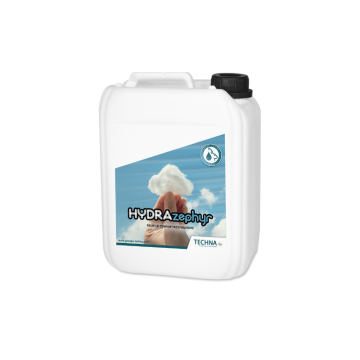Whether in tropical countries or in Europe in summer, rabbits are confronted with heat stress in high temperatures. Rabbits are highly sensitive to heat and have to fight back as soon as temperatures rise above 26°C. What are the effects of heat stress on rabbits? What action should be taken in the event of hot weather?
Characterising heat stress
Heat stress refers to the body's inability to maintain a normal temperature that guarantees standard metabolic and physiological functions. In the case of rabbits, the zone of thermal neutrality is set by the ambient temperature, which must be between 10°C and 25°C. However, the temperature-hygrometry combination is more important than temperature alone, because the humidity of the air alters the perception of the temperature actually perceived by the rabbits. For example, a temperature of 35°C with 100% relative humidity will be less well tolerated by the animals than a temperature of 40°C with 20% relative humidity.
Breeding conditions not always easy to control
In the wild, rabbits spend most of their day in a burrow, where temperatures vary between 15 and 20°C and humidity between 70% and 90%.
On rabbit farms, the temperature-hygrometry combination of the ambient air is not always suited to the rabbit's comfort zone. This is particularly the case in tropical countries, where climatic conditions are sometimes extreme and temperature and humidity settings in breeding buildings are often difficult to adjust in the absence of appropriate devices (closed building, fans, cooling, etc.).
The harmful effects of hot weather
Extreme heat has an impact on both the behaviour and performance of rabbits, which are indicators of thermal discomfort that need to be taken into account.
From a behavioural point of view, the following can be detected:
- An acceleration of the respiratory rhythm: through this mechanism, the rabbit increases the passage of air into the nasal cavity and then into the lungs, which humidifies and cools the air.
- Greater vascularisation of the ears: the blood network in rabbits' ears helps to intensify exchanges between blood overloaded with heat and the cooler outside air.
- Lying down: this behaviour allows them to maximise heat exchange between the air and the skin.
From a zootechnical point of view, the repercussions of heat stress can be seen in a number of areas:
- Feeding: high temperatures, above 30°C, have a significant impact on feed consumption, which can fall by up to 60%.
- Performance: in relation to the drop in feed consumption, the fertility and milk production of female rabbits decline, mortality in the nest of young rabbits is impacted by a lack of milk, and male reproduction and fattening growth are also affected. In extreme cases, when rabbits are no longer able to regulate their body temperature, metabolic acidosis can occur, leading to death.
By struggling to evacuate the extra heat, the rabbit tires and exposes itself to metabolic risks. This is why the effects of thermal discomfort can be visible in the short term (reduced consumption, mortality, etc.), but also in the medium to long term (female fatigue, economic indicators, etc.).
A few things to do in hot weather
There are a number of practical steps you can take to limit the impact of hot weather on the behaviour, health and performance of your rabbits.
Atmosphere
- Adjust ventilation to remove excess heat and water produced by the animals. Provide a high extraction to evacuate 30 to 40% of the air above the animals.
- Use "cooling" evaporator panels to cool the ambient air in the rooms. To remain effective, these panels must be regularly maintained.
- Fog the barn or, as a last resort, moisten air inlets and corridors with clean water.
- In traditional, semi-open-air or open-air rearing, use fans (spraying water in front of the air blower will produce a misting effect) and avoid direct sunlight by shading the rabbits with local materials in the building or cages (straw, shavings, cardboard, etc.).
- When designing a statically ventilated building, ensure that it is oriented to take account of the sun's rays and the prevailing winds, so as to benefit from a shaded and ventilated atmosphere (without major draughts), and consider a high roof to give the room more volume.
Management
- Feed fattening rabbits and carry out controlled suckling of the young preferably in the evening so that the extra heat from digestion takes place at the coolest times of the day.
- Increase surveillance during births to avoid births on wire mesh.
- Lighten nests with shavings and hair and remove them a little earlier.
- Reduce fattening densities.
- Provide for a higher turnover of female rabbits.
Animals
- A recent study has demonstrated the benefits of clipping rabbits' hair to reduce the negative effects of high ambient temperatures on the performance of growing rabbits. This uncommon practice could be considered in extreme conditions on traditional farms where the environment cannot be controlled.
Water
- Change the water in the tanks more often to keep it fresh and not stagnant.
- Purge the pipes regularly to prevent algae growth.
- Use soluble products to support physiological processes (respiratory protection, liver protectors, vitamin C, etc.).
- On traditional farms, be sure to increase the number of watering points.
Feed
- Adapt feed specifications to compensate for the drop in feed consumption (nutritional concentration) while enhancing palatability.
- In maternity units, increase supplementary feed intake to limit under-consumption of complete feed and reduce fatigue in breeding females and males.
Our experts are there to advise you, do not hesitate to contact us!
Talk to our experts
Feedia embodies Techna's range of advice and solutions in breeding techniques and precision nutrition, serving the performance of production organisations, feed manufacturers and their breeder customers.

